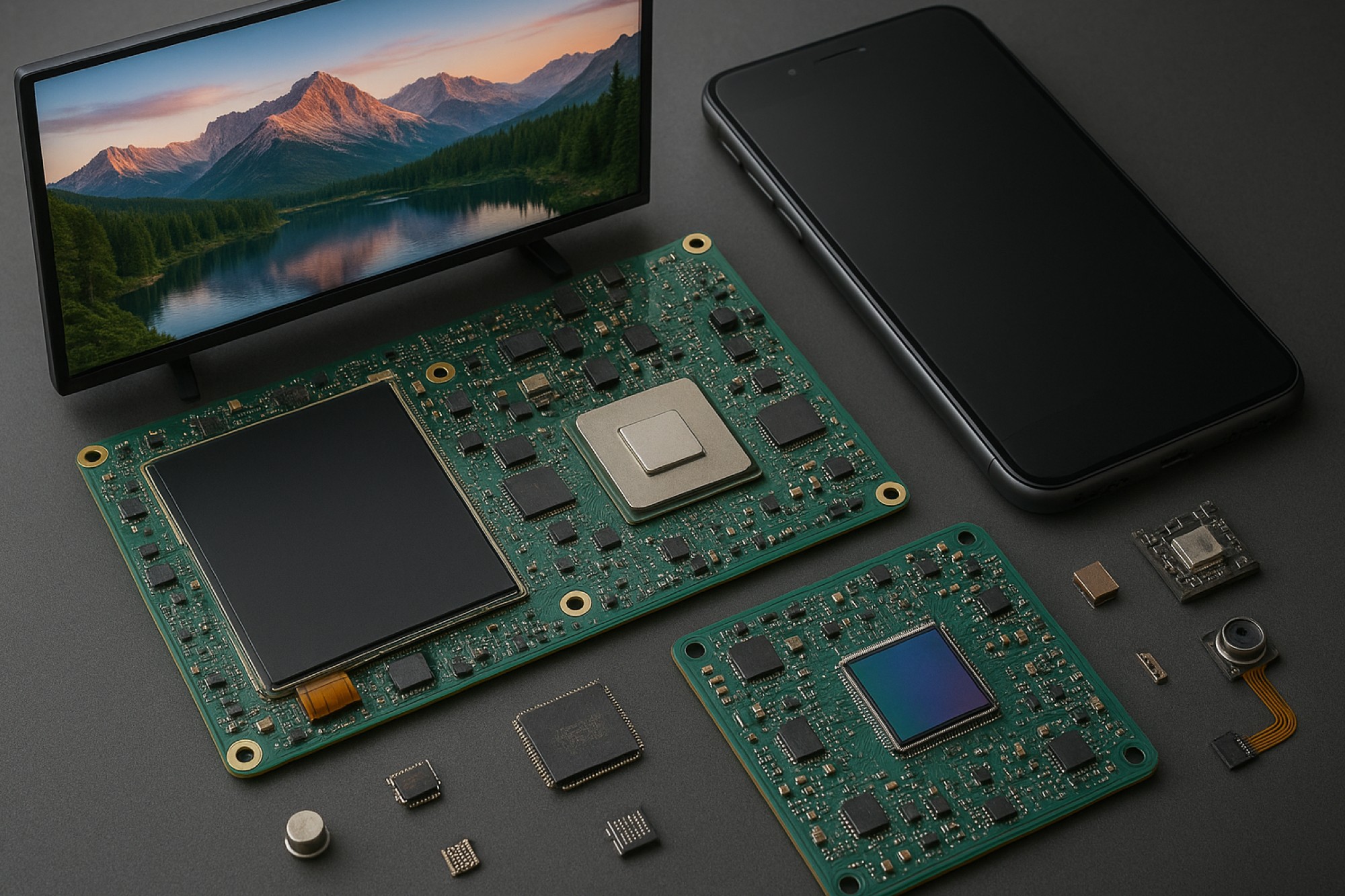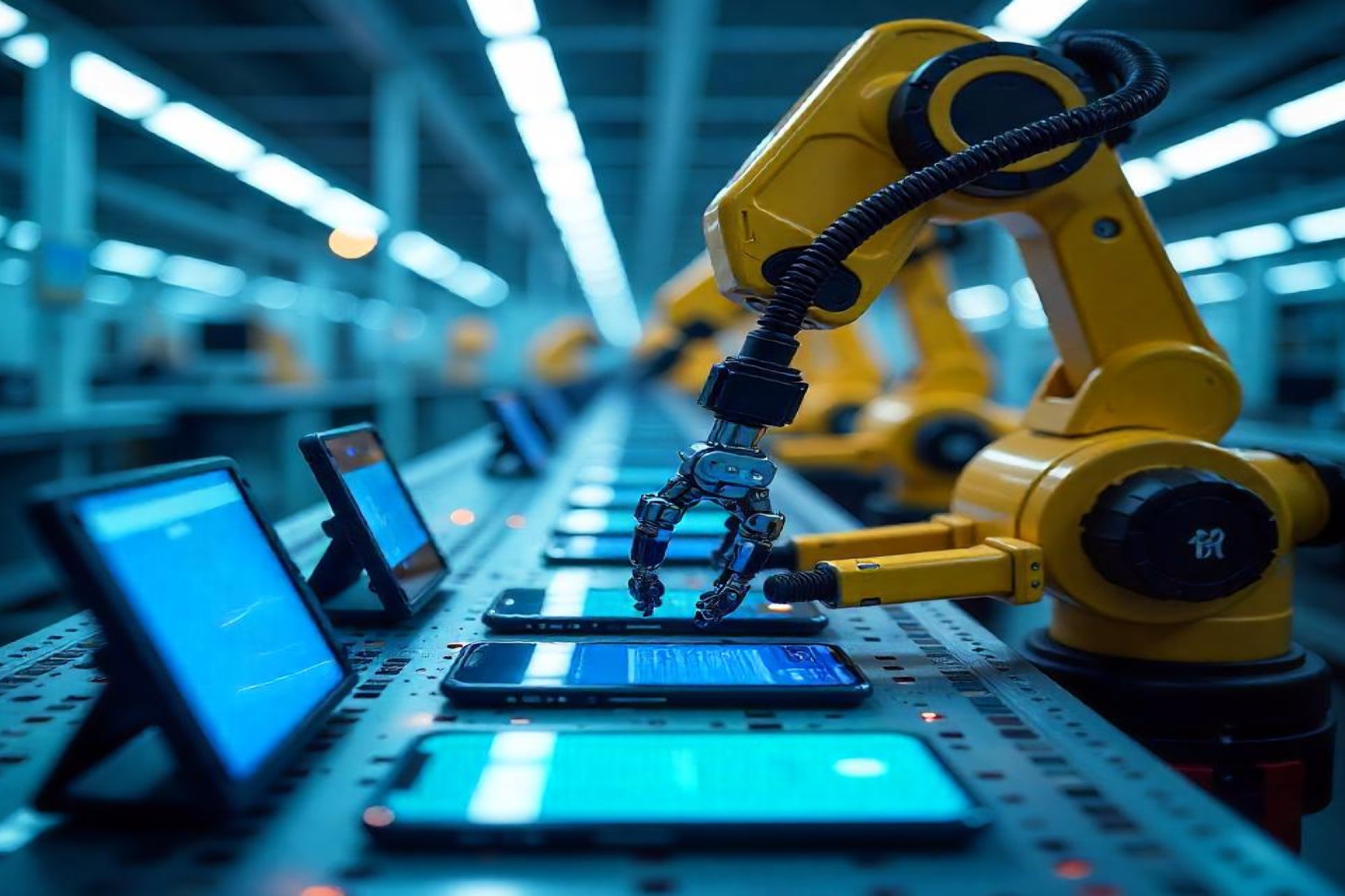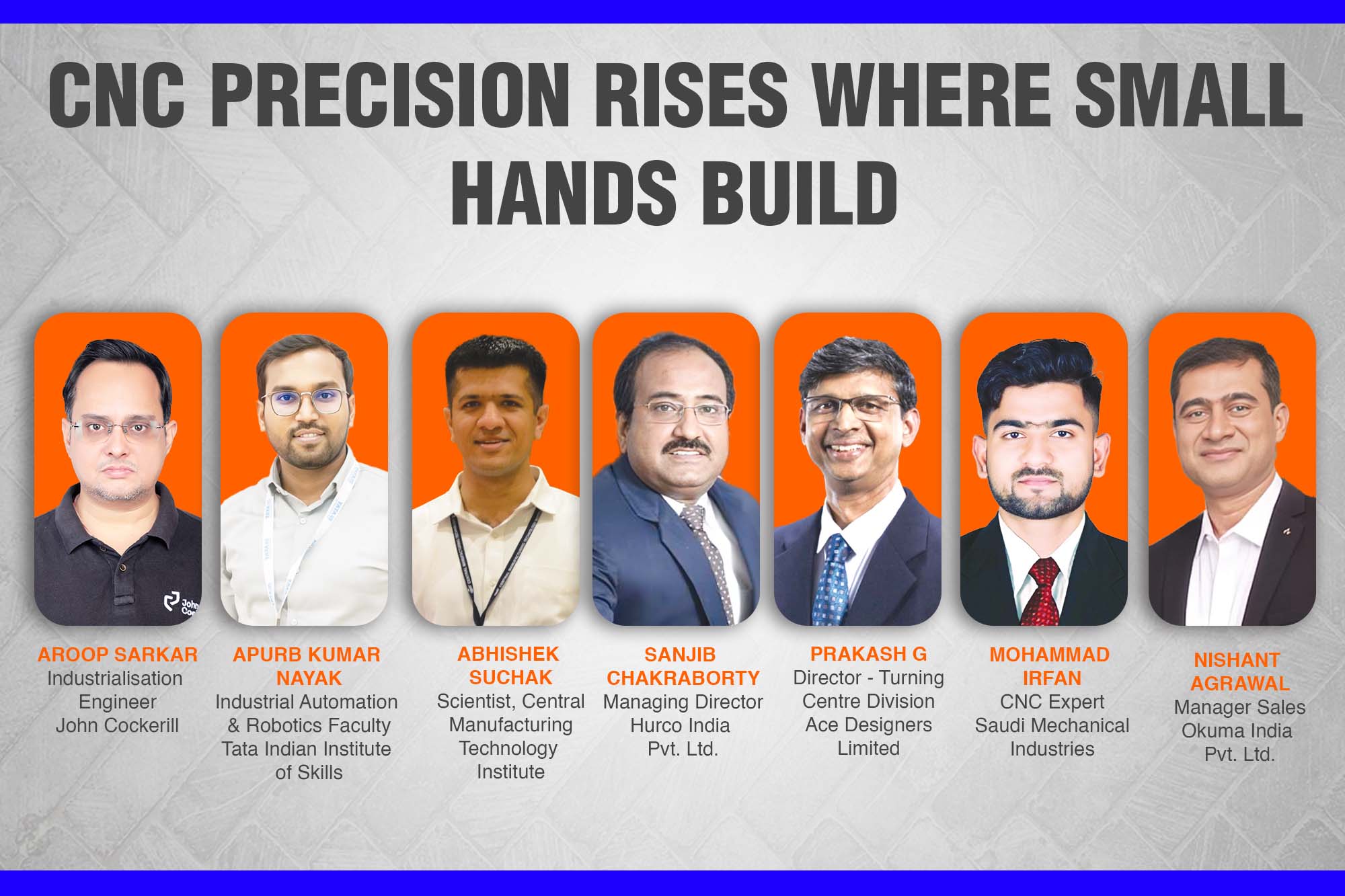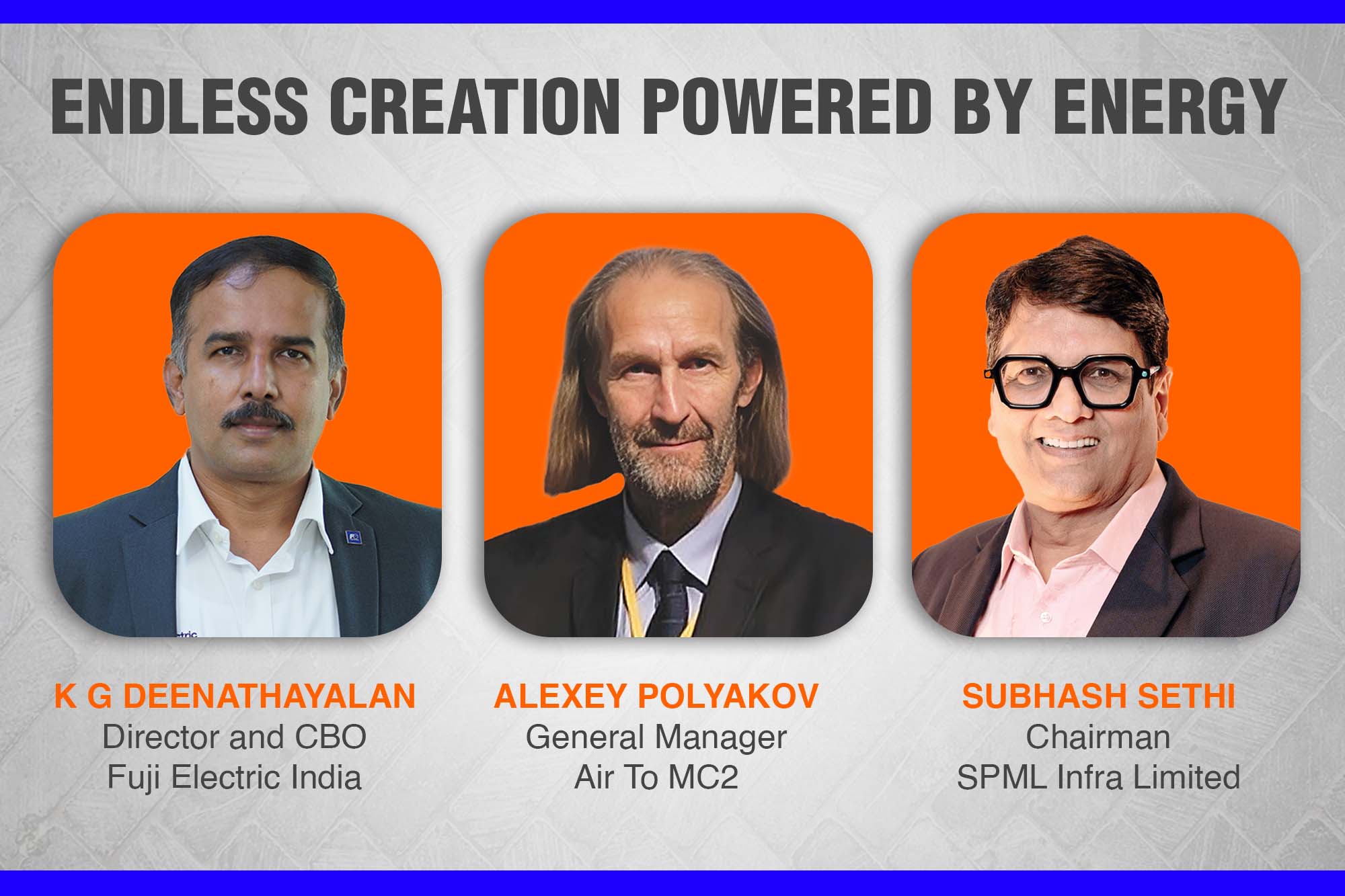Is India an assembly nation or an innovation hub?
By Staff Report May 30, 2025 3:00 pm IST
Despite a vast pool of young talent, India’s electronics manufacturing lacks the deep-tech muscle to match giants like China and Taiwan. Scaling up demands a threefold push in R&D, IP, and ecosystem depth. The real question is, beyond final assembly, can India build the deep-tech backbone—components, IP, and R&D—to truly lead the global value chain?
Trump recently told Tim Cook, in the context of shifting manufacturing from India to the US, “India can take care of itself.” While the statement does hold some weight—backed by data that suggests India is increasingly self-reliant—it raises an important notion. It checks whether or not India can truly scale up to meet the demands of global electronics manufacturing.
We are witnessing a growth trajectory in the electronics manufacturing segment. Apple assembled $22 billion worth of iPhones in India in the 12 months through March, increasing production by nearly 60 percent over the previous year. In the last financial year, smartphone exports surpassed ₹2 lakh crore, with iPhone exports alone accounting for approximately ₹1.5 lakh crore. Over the past decade, electronics production has grown fivefold, and exports have grown more than sixfold, with export CAGR exceeding 20% and production CAGR over 17%.
However, according to PIB, India still imports nearly three times more electronics than it exports. While export growth is steady and projected to rise gradually, the country continues to rely heavily on imports for key components such as semiconductors, chipsets, displays, battery units, PCB assemblies, sensors, connectors, and antennas, primarily sourced from countries like Taiwan, South Korea, China, the USA, Japan, and regions across the Middle East and East Asia.
Fiscal Year | Exports (USD Billion) | Export YoY Growth | Imports (USD Billion) | Import YoY Growth |
| 2022-23 | 23.57 | +50.5% | 77.26 | +8.8% |
| 2023-24 | 26.80 | +13.7% | 81.00 | +4.9% |
Source: PIB
Where does the problem lie?
India produces around 1.5 million engineering graduates annually; few of them are the brightest minds from IITs and IIMs. However, we still face a shortage of highly specialised engineers in chip design, fabrication, cleanroom operations, and tooling experts for precision manufacturing. Also, the R&D infrastructure in electronics, such as IP, SoC (system-on-chip) design, and display tech, is not evolving. India has a large IT and software talent base, but hardware engineering skills are lagging, especially for deep-tech electronics.
India mostly does final assembly for phones, TVs, and consumer electronics because components like PCBs, chips, displays, connectors, sensors, capacitors, etc., are mostly imported from China, Taiwan, South Korea, and Japan. This is because making components needs high capital investment and advanced manufacturing infrastructure. Amidst all this, we must compete with China, which is decades ahead of us. A huge challenge is to match the pricing that already developed nations have to offer due to their mammoth production scale.
Even when all this is achieved, India still faces a significant shortfall in Rare Earth Elements (REEs), essential for manufacturing magnets, displays, and sensors. Additionally, while the country has quartz, it struggles with producing silicon-grade sand at the purity levels required for semiconductors. India heavily relies on imports for critical battery materials such as lithium, cobalt, and nickel, which are primarily sourced from Australia, Chile, and the Democratic Republic of the Congo (DRC). Furthermore, gallium, indium, and tantalum—key components in LEDs, chips, and mobile technology—are not produced at a large scale within India. Even if India successfully establishes semiconductor fabrication plants (fabs), it will still need to import crucial minerals and processed materials until domestic mining and refining capabilities are developed.
A representative from Lava International commented that for India to emerge as a true global electronics hub, we need a multi-pronged strategy and to create local IPs. India needs to move up the value chain from contract manufacturing to original design and IP development. This requires investment in R&D, skilling, and a stronger academic-industry interface. We need to add deeper value. Much of India’s electronics manufacturing is focused on final assembly. Localised sourcing of key components, backed by a mature ecosystem of materials and sub-assemblies, is crucial. There needs to be diversification beyond mobile phones. Our focus must expand to include consumer electronics, medical tech, EV components, and industrial IoT devices. Integration into these global supply chains will make India indispensable to the world’s electronics industry.
We need support with a long-term vision. They said that PLI schemes are a great start, but we need a sustained push in infrastructure, logistics, and ease of business, especially for MSMEs.
India requires heavy investment and long-term policies in fabrication plants. We heavily rely on imports, with over 90% of India’s semiconductors coming from Taiwan and China. Policy and infrastructure gaps exist, and despite having initiatives like PLI, their execution is slow.
We need to move beyond software. Investment in hardware and focused R&D in the electronics sector is key to growth. Indians need to build and create. Global MNCs and tech companies mostly seek after Indian students, so this talent can be diverted to build the nation.
Wider scenario
Within a short time, the electronics manufacturing ecosystem—comprising component manufacturers and a diverse range of players—has developed substantially. Today, more than 400 production units, both big and small, manufacture various components.
Reflecting global industry trends, India’s journey in electronics manufacturing has evolved through distinct phases: beginning with finished goods, progressing to sub-assemblies, and now entering the critical phase of deep component manufacturing. The sector is steadily advancing into this third phase, which marks a significant leap in value addition, self-reliance, and ecosystem depth.
Kartik N, CEO-Staffing, TeamLease, shares that India’s domestic electronics manufacturing is rapidly growing, with production surging from ₹1.9 lakh crore in FY15 to ₹9.52 lakh crore in FY24. This year’s huge budget for electronics manufacturing is set to accelerate this momentum by strengthening local value addition, PLI expansion, and component manufacturing while also providing a big boost to employment through new jobs and apprenticeships.
The Ministry of Electronics and Information Technology (MeitY) also recently notified the Electronics Components Manufacturing Scheme to position India as a global hub for electronics manufacturing. The Scheme follows the recent Cabinet decision.
The Scheme is a horizontal initiative benefiting multiple sectors, including consumer electronics, medical devices, and automobiles, creating a significant economic multiplier effect. It focuses on passive electronic components like resistors, capacitors, connectors, inductors, speakers, relays, switches, oscillators, sensors, films, lenses, and many more, while active components fall under the India Semiconductor Mission.
Recognising the importance of precision tools and capital goods in manufacturing, the Scheme will also support the design and manufacturing of equipment used in electronics production.
Given the high investment and longer gestation periods required for electronic component manufacturing, the Scheme will provide three incentive structures: i) Turnover-linked incentive, ii) Capex-linked incentive, and iii) Hybrid incentive model.
Road Ahead
Electronic manufacturing needs handholding and technical support. Indian OEMs and large EMS players, with the aid of foreign producers, can align with international quality and compliance standards, especially for exports. Seeking collaboration on product development and backward integration, especially in areas where India has emerging strengths like optics, sensors, and chargers, can be a big help. Truly exploring the global market by leveraging global networks to introduce Indian suppliers to international clients can make India a true export hub for electronics components, not just finished goods.
Cookie Consent
We use cookies to personalize your experience. By continuing to visit this website you agree to our Terms & Conditions, Privacy Policy and Cookie Policy.
















